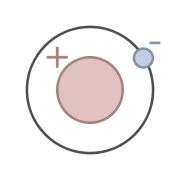February 25, 2010 feature
Evidence of a new phase in liquid hydrogen

(PhysOrg.com) -- We like to think that we’ve got hydrogen, one of the most basic of elements, figured out. However, hydrogen can still surprise, especially once scientists start probing its properties on the most fundamental levels. "We ran simulations in order to provide a quantitative map of the molecular to atomic transition in liquid hydrogen," Isaac Tamblyn tells PhysOrg.com. "Some of what we found was surprising, and could change the basic equations of state used in models involving hydrogen."
Tamblyn is a scientist at Dalhousie University in Halifax, Canada. He worked with Stanimir A. Bonev to simulate the transition in liquid hydrogen, offering evidence for an unreported liquid phase, and noting some interesting structural characteristics of liquid hydrogen. Information on the simulation efforts, as well as results and conclusions, are presented in Physical Review Letters: “Structure and Phase Boundaries of Compressed Liquid Hydrogen.”
“We used first principles molecular dynamics simulations to model the liquid,” Tamblyn explains. “Forces between atoms were obtained using the Schrödinger equation. Velocities of the atoms were then updated, and the system was evolved through time.”
“We ran simulations to determine what would happen under different thermodynamic conditions, like density and temperature, and monitored the stability of molecules as the simulations progressed,” Tamblyn continues. “Our transition line is based on molecular stability. The chances of a molecule surviving are greater in a molecular liquid than in an atomic one, so this is a natural way to describe the transition.”
After running the simulations, Tamblyn and Bonev then had to analyze them. “We discovered an ordering in the liquid that accounts for some of the interesting characteristics of hydrogen, such as the fact that under certain conditions, liquid hydrogen is more dense than the solid. We also found that highly ordered packing explains properties related to dissociation that were previously not well understood.”
The pair found that the simulations suggest criteria for the existence of a first-order phase transition in liquid hydrogen. “The existence of this has been debated,” Tamblyn explains, “and we provide some evidence for its possibility.”
One of the most significant things Tamblyn and Bonev discovered through their simulations, from an astrophysics standpoint, is that equations describing the properties of hydrogen might need to be updated. “This should change the modeling going forward,” Tamblyn insists. “What we found in the liquid suggests what the solid might look like, and that can help determine some of its thermal and electronic properties.”
There is a good chance that planetary models might be changed using the new information on hydrogen structure discovered through these simulations. “Some previous calculations may need to be revised,” Tamblyn predicts. He also says that the simulations hint at some of the potential effects of mixtures involving hydrogen. “We’re especially interested in the implication for hydrogen and helium mixtures.”
Going forward, Tamblyn believes there is room to expand upon the work. “We are looking at the metallization of hydrogen, following the transition into a liquid metal. We are also looking at simulating hydrogen mixtures, especially with helium, to see if our findings hold true.”
More information: Isaac Tamblyn and Stanimir A. Bonev, “Structure and Phase Boundaries of Compressed Liquid Hydrogen,” Physical Review Letters (2010). Available online: link.aps.org/doi/10.1103/PhysRevLett.104.065702
Copyright 2010 PhysOrg.com.
All rights reserved. This material may not be published, broadcast, rewritten or redistributed in whole or part without the express written permission of PhysOrg.com.



















